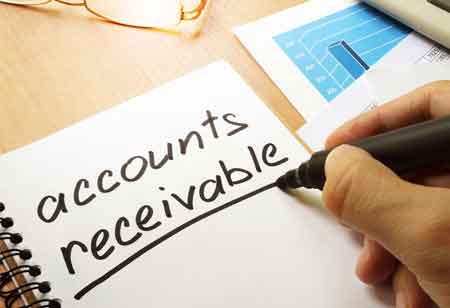THANK YOU FOR SUBSCRIBING
Be first to read the latest tech news, Industry Leader's Insights, and CIO interviews of medium and large enterprises exclusively from CFO Tech Outlook
THANK YOU FOR SUBSCRIBING

By
CFO Tech Outlook | Friday, January 24, 2020
Stay ahead of the industry with exclusive feature stories on the top companies, expert insights and the latest news delivered straight to your inbox. Subscribe today.
The money in account receivable is the amount owed by a customer to its company and is considered as the asset of the company.
FREMONT, CA: Accounts receivable, sometimes shortened to "receivables" or A/R, represents money that is owed to a company by its customers for products or services that it has delivered but for which it has not yet received payment. A/R on the balance sheet is considered a current asset by the companies.
Payment Terms
Mostly all the companies that sell products on credit terms for its A/R include the deadlines for the customers to pay their bill before they are charged a late fee. If customers fail to stick to the payment terms, then the seller can approach its customer and offer new terms or some other remedy to collect on the bill. After these, if no progress takes place, then the receivable balance is either turned over to a collection agency or, in more extreme cases, the firm sues the person or institution that owes it money.
The customary A/R terms are expressed through numbers like "Net 15," "Net 10," "Net 60," "Net 30," or "Net 90." The numbers refer to the number of days in which the net amount is to be paid. Many companies are offering an early-pay discount to free up cash flow and accelerate the speed at which it can access funds. These things motivate customers to pay them sooner.
Large A/R Balances
Every company wants to get paid on time and always cash coming their way. It is a positive thing to find a large AR balance. However, money in A/R is not in the bank, which exposes the company to a degree of risk. If one customer or client represents more than five or 10 percent of the accounts payable, this creates exposure and might be cause for concern. Usually, to face such situations, companies build cash reserves. Reserves are specific accounting charges that reduce profits each year, meant to approximate anticipated losses.
Unearned or Prepaid Revenue
Different companies have different models of business, in which some get paid up front. In this case, the business doesn't record an account receivable but instead enters a liability on its balance sheet to an account known as unearned revenue or prepaid revenue. The money is earned by shipping products or making progress through the manufacturing process. When using the percentage of completion method, it gets transferred from unearned revenue on the balance sheet to sales revenue on the income statement, which also reduces the liability and increases reported sales.
See Also: Top FinTech Solution Companies
Check Out:- Top Workforce Management Solution Companies
I agree We use cookies on this website to enhance your user experience. By clicking any link on this page you are giving your consent for us to set cookies. More info

However, if you would like to share the information in this article, you may use the link below:
www.cfotechoutlookeurope.com/news/things-to-know-about-accounts-receivable-nid-880.html



